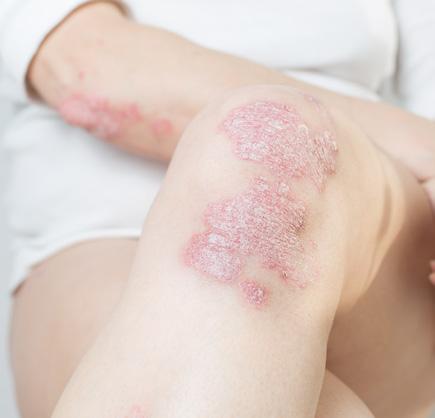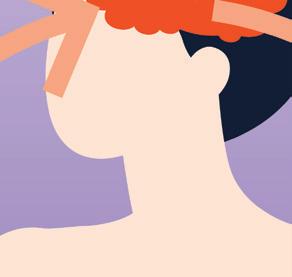
2 minute read
The Brain-Skin Axis
from NÁZEV - TEST


























Psoriatic disease is a systemic condition affecting multiple body sites. According to the Global Psoriasis Atlas published in 2020, at least 60 million people are living with psoriasis worldwide1. As only 19% of countries have epidemiological data on psoriatic disease2, and the burden of those living with joint symptoms in addition to skin manifestations is not included in these studies, there is reason to believe that the current figure vastly underestimates the number of people living with the disease.
Psoriatic disease is a multifactorial condition, which means that both genetic and environmental factors play a role in the onset and recurrency of the disease. After its onset, psoriatic disease may resolve with the help of treatments, then return periodically and unpredictably. These recurrences are known as disease flares. People with psoriatic disease have to live with it for the entire length of their life.
Living with a condition visible on the skin takes a heavy toll on a person’s mental health and emotional well-being. The psychological impact is increasingly recognized as a significant part of psoriatic disease. But the relationship between psoriatic disease and well-being is complex and multifaceted.
For example, one of the factors contributing to the exacerbation of psoriatic disease is stress. Stressful events can be responsible for the onset of disease and can trigger a new flare3. Stress exacerbates psoriatic disease in both children and adults. Stressful events can trigger any type of psoriatic disease (plaque4, guttate5, pustular6, or erythrodermic7) and worsen its symptoms8,9. In turn, the physical symptoms of the disease - such as joint pain and skin itch - are both physically and emotionally stressful, and can lead to sleep deprivation, fatigue, and negative effects on mental health. Paradoxically, the unpredictability of disease flares is itself a cause of stress and anxiety. The result: a first-of-its-kind global survey investigating happiness in people with psoriatic disease reported that 54% of respondents experience a level of stress and anxiety that surpasses the general average10.
Self-esteem, confidence, and body image may be negatively affected by psoriatic disease11. They are often associated with rejection from society, a
What is psoriatic disease?13
Psoriatic disease is a systemic condition affecting multiple body sites, predominately the skin, the joints, or both.

Skin and joint symptoms are different manifestations of the same disease. They may manifest independently. A third of people with skin manifestations of psoriatic disease (psoriasis) will develop a type of inflammatory arthritis affecting joints and tendons (psoriatic arthritis). In some people, joint symptoms develop before skin lesions.
In addition to skin and joint symptoms, psoriatic disease is characterized by increased risk of developing related noncommunicable diseases. The most common comorbidities are obesity, hypertension, dyslipidemia, diabetes (collectively referred to as metabolic syndrome), cardiovascular disease, and inflammatory bowel disease. Moreover, psoriatic disease has a major impact on mental health and quality of life.
social process called stigma. What’s worse, stigma is often accompanied by self-stigma: individuals with psoriatic disease can feel self-conscious and embarrassed due to their condition10,12. The stigma and self-stigma associated with psoriatic disease have broad repercussions. Negative reactions from society can generate feelings of shame, embarrassment and isolation, which in turn influence mental health and social interactions10.
The presence or absence of psychiatric comorbidities such as depression and anxiety are only one factor impacting an individual’s ability to live a full life. Social interactions, quality of relationships, ability to work and participation in leisure activities are all important aspects to an individual’s life experience. All of these aspects can be impaired in psoriatic disease.





